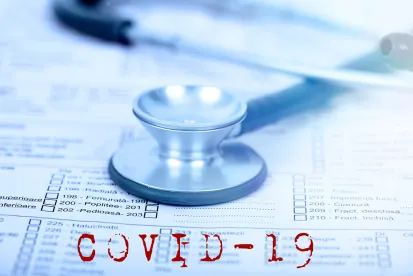The COVID-19 pandemic has created innumerable challenges for employers around the country, not the least of which are a slew of obligations under federal, state, and local laws. This is especially true for employers in California, where we have already written about legal risks associated with the pandemic. A new California law, AB 685, adds yet another set of requirements for California employers.
AB 685, which takes effect on January 1, 2021, requires California employers to notify employees, employees of subcontractors at the worksite, and union representatives, if applicable, whenever the employer receives a “notice of potential exposure” to a “qualifying individual” at the worksite. An employer may also be required to notify the local public health agency.
The new law defines a “qualifying individual” as any person with any of the following:
-
A laboratory-confirmed case of COVID-19, as defined by the State Department of Public Health
-
A positive COVID-19 diagnosis from a licensed health care provider
-
A COVID-19-related order to isolate provided by a public health official
-
Death due to COVID-19, in the determination of a county public health department or per inclusion in the COVID-19 statistics of a county
A “notice of potential exposure” is any one of the following:
-
Notification to the employer or its representative from a public health official or licensed medical provider that an employee was exposed to a qualifying individual at the worksite
-
Notification to the employer or its representative from an employee or employee’s emergency contact that the employee is a qualifying individual
-
Notification through the testing protocol of the employer that the employee is a qualifying individual
-
Notification to an employer or its representative from a subcontracted employer that a qualifying individual was on the worksite of the employer receiving notification
Once an employer has notice of a potential exposure to a qualifying individual, the employer must provide a written notice (“Notice to Workers”) within one business day to all of its employees and the employees of subcontractors who were present at the employer’s worksite during the infectious period. The Notice to Workers must inform recipients that they may have been exposed to COVID-19, and the Notice to Workers must be transmitted in the manner that the employer usually uses to communicate with employees. The Notice to Workers must also: (a) provide information regarding COVID-19-related benefits to which the employee may be entitled, and (b) outline the disinfection and safety plan that the employer plans to implement and complete per the guidelines of the federal Centers for Disease Control.
An employer must also provide written notice to the exclusive union representative of its employees (“Union Notice”), if applicable. The Union Notice must contain the same information as would be required in an incident report in a Cal/OSHA Form 300 injury and illness log, unless the information is inapplicable or unknown to the employer. The Union Notice must contain this information even if the employer is not required to maintain a Cal/OSHA Form 300 injury and illness log.
The law also requires an employer who experiences a “COVID-19 outbreak” to provide notice to the local public health agency (“Public Health Notice”) within 48 hours. The Public Health Notice must include the names, numbers, occupations, and worksites of the qualifying individuals. The employer must also include the business address and NAICS code of the worksite where the qualifying individuals work. Finally, the employer must continue to give notice to the local public health agency of any subsequent cases.
The law also prohibits retaliation against an employee for disclosing a positive COVID-19 test or diagnosis or order to quarantine or isolate. Additionally, an employer may not require an employee to disclose medical information unless otherwise required by law.



 />i
/>i

